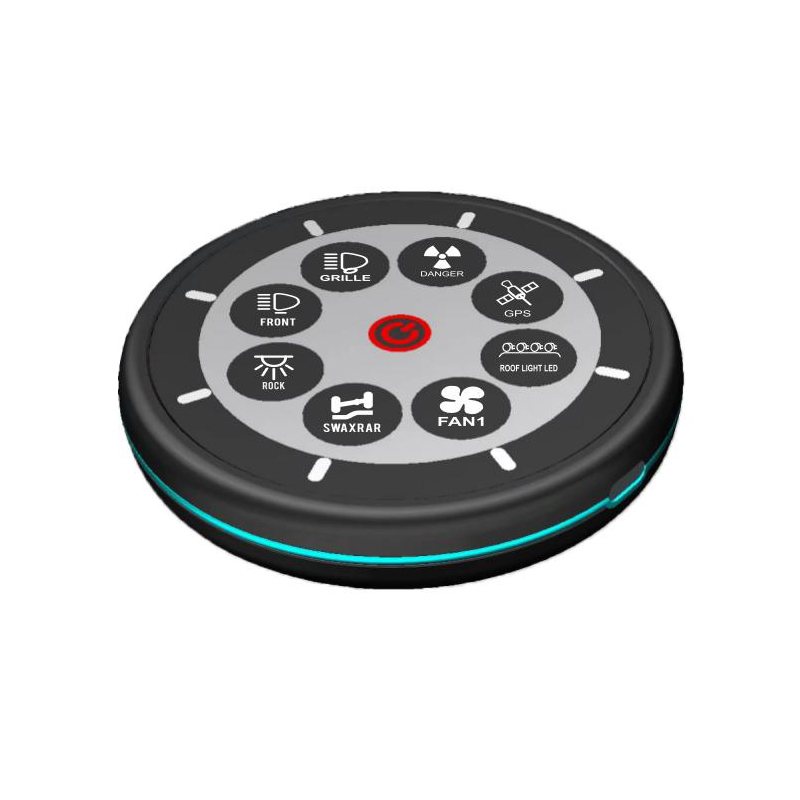- Tel: +86-13385878168
- E-mail: [email protected]
- Please contact us if you have questions.

Web Menu
Product Search

Assessing the Fire-Resistant and Flame-Retardant Properties of a Switch Panel
The Role of Fire Safety in Electrical Components
Fire resistance is a critical factor when selecting any electrical component, especially in high-risk environments such as industrial plants, commercial buildings, or marine vessels. A Switch Panel, which houses switches and sometimes circuit protection devices, can be a potential ignition source if built with flammable materials or exposed to electrical faults. Ensuring that a Switch Panel has flame-retardant properties helps prevent fire spread, protects other equipment, and contributes to overall operational safety.

Materials That Determine Flame Retardancy
The materials used in constructing a Switch Panel have a great influence on its fire resistance. Common fire-retardant plastics include polycarbonate, polyamide (nylon), and specially treated ABS, all of which can be formulated to meet stringent flame-resistance standards. These materials are often reinforced with flame-retardant additives such as halogen compounds, phosphates, or mineral fillers. Panels made from these treated materials are designed to resist ignition, limit the spread of flames, and self-extinguish when the heat source is removed, significantly reducing the risk of a fire hazard.
Relevant Safety Ratings and Standards
To evaluate the fire performance of a Switch Panel, manufacturers often refer to internationally recognized standards. One key classification is the UL94 flammability standard, which rates plastics from HB (low resistance) to V-0 (high resistance). A panel rated V-0 is capable of extinguishing flames within 10 seconds and does not emit flaming drips, making it ideal for high-safety applications. Some panels also meet IEC 60695 testing for glow-wire ignition and combustion behavior, which further confirms their suitability for installation in environments with strict fire safety requirements.
Enclosure Design and Fire Containment
Beyond the materials, the structural design of a Switch Panel contributes to its flame-retardant capabilities. Panels with compartmentalized enclosures and internal thermal barriers can slow the progression of heat and flames, helping to contain internal faults or electrical arcs. In sealed or gasketed designs, fire-retardant seals and insulators can prevent combustion gases from escaping and igniting nearby components. Some panels are designed with pressure-relief vents or arc fault containment features, offering an added layer of fire protection.
Application Environments Requiring Fire-Resistant Panels
Certain settings demand a higher degree of flame resistance from all installed components. These include public buildings, data centers, refineries, transportation systems, and offshore platforms, where electrical safety regulations are especially strict. In these applications, installing a fire-rated Switch Panel not only protects the equipment but also supports building code compliance and reduces liability. Using non-compliant panels in such environments can pose significant risks and may result in violations or insurance coverage issues in the event of an incident.
Benefits of Flame-Retardant Switch Panels
Using a flame-resistant it improves safety and reliability across various installations. It helps prevent minor malfunctions from escalating into catastrophic fires, protects adjacent wiring and equipment, and reduces the need for costly fireproof enclosures or containment systems. Additionally, flame-retardant panels often demonstrate better thermal stability and mechanical strength under high load or fault conditions, making them more durable and consistent in performance over time.
Maintenance and Inspection for Continued Safety
Even if a Switch Panel is manufactured with flame-retardant materials, proper maintenance is essential to ensure ongoing fire safety. Accumulated dust, loose wiring, or component fatigue can still present fire risks. Regular inspection, cleaning, and testing of the panel’s internal wiring and connections are necessary to preserve its safety profile. Labels indicating fire ratings should remain visible, and any damage to the panel enclosure should be addressed immediately to maintain its protective function.
Conclusion: Fire Safety Is an Essential Feature in Quality Panels
In conclusion, whether a Switch Panel possesses flame-retardant properties depends on its material composition, design, and certification to recognized safety standards. High-quality panels intended for commercial or industrial use are often made from fire-resistant materials and tested under strict protocols to ensure they reduce fire risk. Choosing such panels enhances safety, ensures code compliance, and provides long-term reliability in environments where fire hazards must be reduced.
Related Products
Request for a call today
-
-
Romy
-
Phone: +86-13385878168
-
WhatsApp: +8613385878168
-
Email: [email protected]
-
-
-
Clark
-
Phone: +86-15397359100
-
Email: [email protected]
-
-
-
Pinky
-
Phone: +86-15305875100
-
Email: [email protected]
-
- Mobile Terminal


 English
English Español
Español













